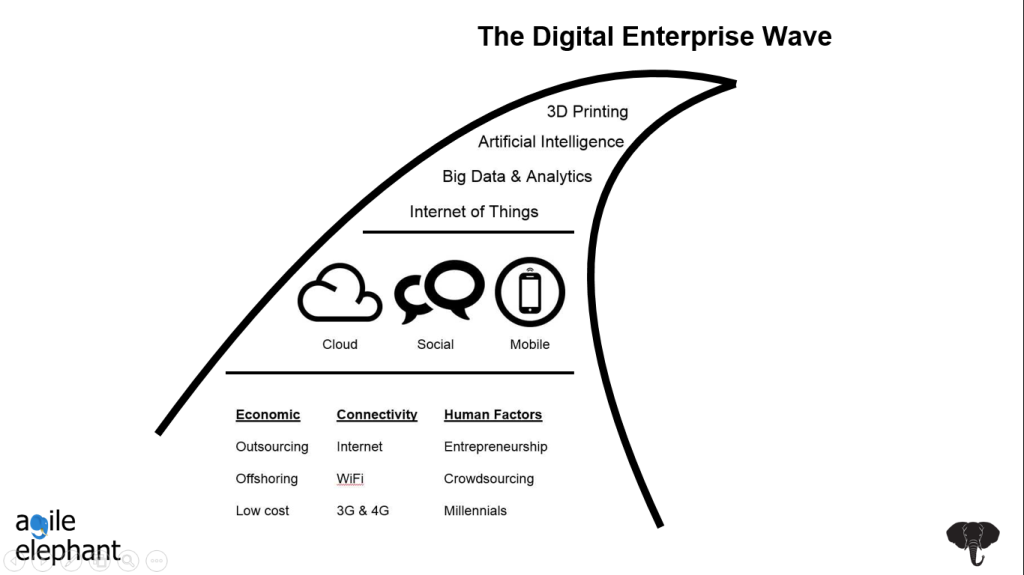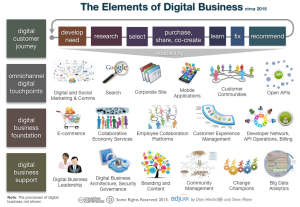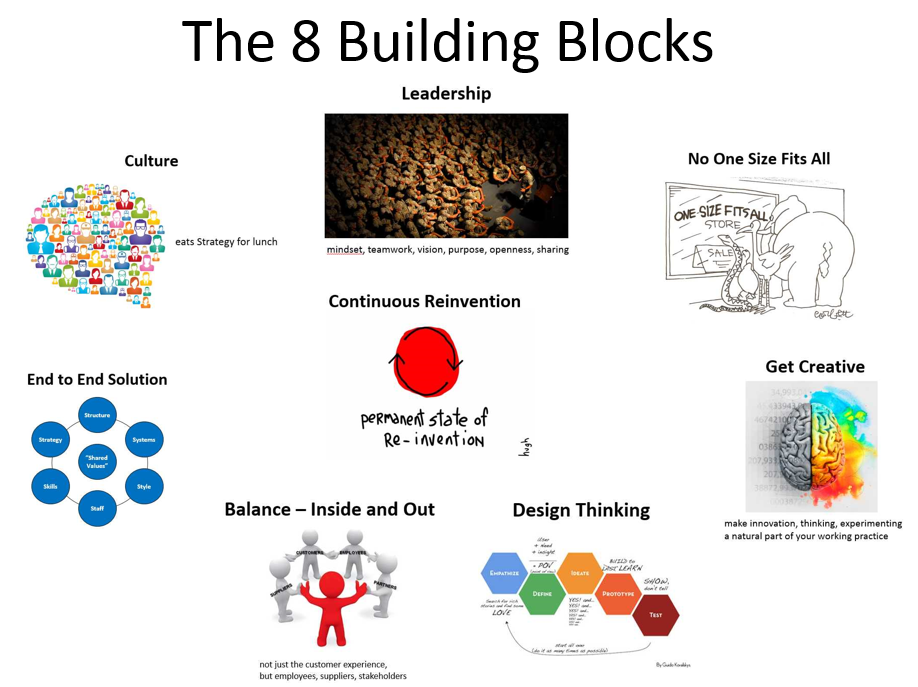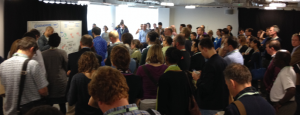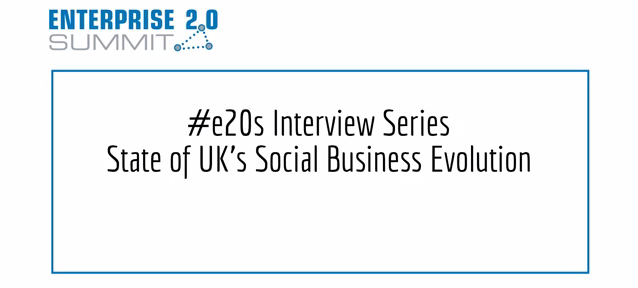Summary
Everybody’s talking Digital Transformation! The term is very definitely being hyped by some, and is in danger of becoming as diluted in meaning as the “cloud” term as it becomes a catch all for almost anything associated with our new connected, social media oriented world using emergent technology. However, we believe it’s an important idea and so this post examines the term and tries to come up with a succinct but all encompassing definition of what it is – better than the many others currently available. Finally we point to the various resources available, mostly from consultancies that we compete with, but that’s the nature of the new, open mindset that is vital to succeeding and transforming in the 21st Century business landscape.
Everybody’s Talking Digital Transformation!
When we launched Agile Elephant in January 2014 we positioned ourselves as a Social Business consultancy. Within six months we had changed the messaging on our website so that the narrative was around Digital Transformation. Something happened in 2014. Suddenly everyone was using the term, from insurgent consultancies like us, to the marketing agencies that were active in social media marketing, to the big firms like PWC, Deloitte and Accenture. Back a year ago in February 2014 at the Enterprise 2.0 Summit in Paris most of the talk was around Social Business. By our London edition in November 2014, and then two weeks ago at the 2015 Paris conference, more people’s slides had Digital Transformation as the headline than Social Business or any other language. During 2014 a shift happened. We all changed our narrative, and in part this is because the core idea is becoming a mainstream necessity for businesses to succeed, and so the way we talk about it has to mature so that the average business person or executive in the C- Suite can understand it, as a first step towards living it.
The Evolution of Terminology
We’ve actually been talking digital for 20 years, but changes like these take time. Back in 1995 Nicholas Negroponte collected together his articles for Wired in to the book Being Digital, as the World Wide Web took hold. He was talking about moving bits instead of atoms. I actually started blogging in 2005, and joined in the emerging London social media scene (where I met my Agile Elephant colleagues). I learned the term Web 2.0 that was popularised by Tim O’Reilly with his conference late in 2004. The 2.0 bit was about a second version of the Internet. It was technospeak, using a programming metaphor to say version 1.0 of the Internet in the 90s was all about static brochure websites, but moving in to the new century the web got interactive. This new “release” of the web was all about conversation and user generated content. Reviews on eCommerce sites. Comments on blog posts. Forums where I could ask questions and get answers. Wikis where we could co-author documents in real time, or crowd-source expertise like Wikipedia – stuff that changed the World! 10 years ago this month some guys started a video dating site, then pivoted a couple of times and realised that the “loading and sharing video” part of what they had was a vital service we all needed. Everyone’s smart phones were shooting video that needed a home on the web as well as on our personal hard drives. And so YouTube was born and became another vital part of our new communications infrastructure.
Around about that time, fellow Enterprise Irregular, Andrew McAfee started to popularise the term Enterprise 2.0 with his blog posts and articles of spring 2006 and a seminal book. This was 2.0 applied inside business as well as external to the consumer. An upgrade to rigid, structured legacy enterprise business systems. His idea was all about using these emergent social software platforms, blogs, forums, wikis and more, with or in place if the company Intranet so more conversations happen, with more working out loud and more ideas being generated.
Just around about this time the idea of microblogging started. The Twitter bird opened its eyes in 2006, early adopters started using it, I jumped on board on 14 February 2007, and then things really took off when it was used as the back channel of March 2007’s SXSW event – the social media crowd jumped on board with a vengeance! We were all experimenting with this new way of communicating, and it was the crowd that turned it in to something that has become another integral component of today’s connected World. Twitter only incorporated as a company in September 2007.
Towards the end of 2009 Stowe Boyd blogged about the Enterprise 2.0 term being too corporate, and then he and others started to use the term Social Business. The complication with that is that the term had already been coined by Muhammed Yunus to mean a business with a social purpose, although many people tended to also use Social Enterprise for that. In any case, it became a more accepted term and so we all started to use Social Business, and often had to explain that we meant using these social collaboration tools inside and outside the organisation to get more things done (rather than the Yunus thing).
Then to complicate matters a little, in 2011 Salesforce, the born on the cloud CRM company, made a big push with their Chatter and other collaboration tools. Marc Benioff and their conference headlines that year announced “Welcome to the Social Enterprise”. They even tried and failed to trademark the term! But by 2012 their messaging had moved on, although the concept is an integral part of their value proposition.
In 2013 Chris Heuer proclaimed Social Business is Dead! That generated some conversations! His post also talked about employee engagement, things like Adam Pissoni of Yammer developing his story of what he calls the Responsive Organizations, or about the business agile enterprise (we like that!), and about where we should be heading with this topic. Let’s add in other terms like the digital workplace, digital disruption, open business, and working out loud. We can also add in ideas about organisation change, with traditional hierarchies becoming wirearchies, or organisations shifting to cross functional teams, or choosing to change the organisation chart radically or to begin as self-organised, team based lattice structures. Actually all of these different ideas are overlapping subsets of a whole concept.
The Evolution of Enterprise Systems
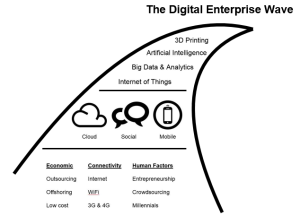 Most of us have grown up with legacy, rigid and structured technology based business systems. Process oriented and mostly built around repeatable steps with a Taylorist, production line view of business. Those core things, like raising invoices and paying suppliers and worrying about inventory, still need to be done, but the technology explosion that has been happening over the last 20 years changes everything. It happened slowly for the first decade, but it is getting ever faster, and particularly over the last 5 years. We call it the Digital Enterprise Wave. It is the combination of economic and technological forces that have changed the World and disrupted whole industries, or businesses like Kodak, or Blockbuster, or Blackberry (actually, nobody is safe). We now live in a World of instant communication and feedback, where the supply chain has changed forever, and where our reaction time has to be just as fast, or we could go out of business. Andrew McAfee’s core idea of taking enterprise systems to the next level, making use of new and emerging technologies is still valid today. We need to recognise that it’s not just about adding great social collaboration technology to existing legacy systems, but about evolving the whole system end to end, and doing it at the same time as changing the organisation itself. For most organisations it isn’t easy, it’s like upgrading the London Underground or the Paris Metro – we have to make structural changes and dramatically improve things, whilst still keeping the trains running, but it has to be done.
Most of us have grown up with legacy, rigid and structured technology based business systems. Process oriented and mostly built around repeatable steps with a Taylorist, production line view of business. Those core things, like raising invoices and paying suppliers and worrying about inventory, still need to be done, but the technology explosion that has been happening over the last 20 years changes everything. It happened slowly for the first decade, but it is getting ever faster, and particularly over the last 5 years. We call it the Digital Enterprise Wave. It is the combination of economic and technological forces that have changed the World and disrupted whole industries, or businesses like Kodak, or Blockbuster, or Blackberry (actually, nobody is safe). We now live in a World of instant communication and feedback, where the supply chain has changed forever, and where our reaction time has to be just as fast, or we could go out of business. Andrew McAfee’s core idea of taking enterprise systems to the next level, making use of new and emerging technologies is still valid today. We need to recognise that it’s not just about adding great social collaboration technology to existing legacy systems, but about evolving the whole system end to end, and doing it at the same time as changing the organisation itself. For most organisations it isn’t easy, it’s like upgrading the London Underground or the Paris Metro – we have to make structural changes and dramatically improve things, whilst still keeping the trains running, but it has to be done.
Digital Transformation Defined
What I do know is that your business model is under threat. Some smarter, nimbler competitor is just about to overtake you with a more innovative approach, or better use of data or clever use of technology and take your market. Business as usual almost certainly won’t be good enough, although it may take a while for you and your balance sheet to realise that. You need to transform, and the transformation incorporates a number equally important ideas. For us, the definitions you can find for digital transformation don’t cover the whole story. They don’t recognise that the transformation needs to be both end to end in the organisation, and about much more than just technology. Here is our definition:
Digital transformation is the process of shifting your organisation from a legacy approach to new ways of working and thinking using digital, social, mobile and emerging technologies. It involves a change in leadership, different thinking, the encouragement of innovation and new business models, incorporating digitisation of assets and an increased use of technology to improve the experience of your organisation’s employees, customers, suppliers, partners and stakeholders.
We’ll be evolving this definition and responding to feedback, so feel free to challenge us and help us refine it and get clarity.
Further Agile Elephant Posts on Digital Transformation:
Transaction Costs in the New Economy
Towards new Organisation Structures
What is the (real) future of Work
Other Resources
Digital Transformation is a big topic. As well as our own blog and resources, here are some other places you can go to get a deeper understanding and other viewpoints on what’s important. We approach this with an open mind and we’re always looking to challenge our thinking, so we’re connecting you with what the other’s think also. That’s the mindset you need in your particular business, sector or area of expertise too!
Accenture’s insight on Digital Transformation
Altimeter on Digital Transformation
Capgemini Consulting on Digital Transformation
Constellation Research’s Elements of Business Architecture for Digital Transformation
Econsultancy on Digital Transformation
Forrester – Accelerate Your Digital Business
PA Consulting’s Digital Innovation Hub
PwC’s Digital IQ Survey and more
Sameer Patel (of SAP) – This Transformation Feels Different. Disruptively So.
Esteban Kolsky – The Foundation Components for Digital Transformation
Greg Verdino – What is Digital Transformation, Really?
Denovati Group on Digital Transformation of Organizations
Or better still take a look at the Agile Elephant viewpoint – read our blog, and contact us!
(top image from Altimeter 2014 State of Digital Transformation images on flickr)

